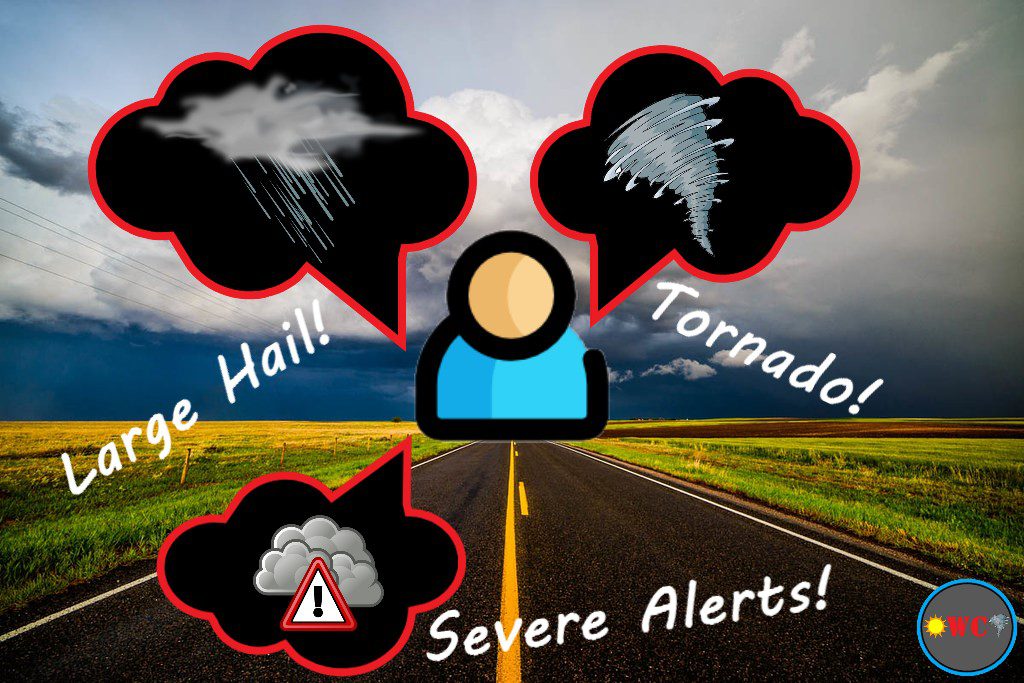
BETA VERSION
What does a Storm Reporter do?
A Storm Reporter is someone who relays info about current conditions or recent conditions of a storm in their local area with specific details. NOAA SkyWarn has a program to become an official Storm Spotter as well which there you must take a class and go through some minor training. But here, you can be WC’s little official Storm Reporter because WC would love extra info and help for storm recaps and info! But WC’s Reporters have to know what they are doing and what to look for. And of course there are rules that come with it as well so let’s dive in.
Basics on Weather Reporting
a. What TO submit…
Lightning Damage:
You can report this if you see with your own eyes debris or visible damage from a lightning strike. Be noticing the specifics of the damage and make sure to be descriptive!
Tornadoes, funnel clouds, wall clouds, or waterspouts:
You can report this if you see any of these at your location with your own eyes or witness damage or notice damage after the fact of that event. Give as much detail as possible and include your location and the times of that event.
Wind Damage:
You can report this if you see any structure damage, tree damage, power line damage, or notice severe winds that classify for a severe thunderstorm warning. (58+MPH) Give as much detail as possible and include your location and the times of that event.
Hail Damage or Size:
You can report this if you see for your own eyes hail that is falling and/or damaging structures. Include the size and damage specifics, and of course give as much detail as possible and include your location and the times of that event.
Flooding:
You can report this if you see for your own eyes flooding anywhere that is major enough. You can also report flooding damage but give as much detail as possible and include your location and the times of that event.
Heavy Rain:
You can report this, although it’s not as helpful. Reports of rainfall cause more than 0.5-1″ of rainfall is better and of course, if there is flooding from the heavy rain, do report it. When you do, give as much detail as possible and include your location and the times of that event.
Winter Weather:
You can report this when you see with your own eyes any type of winter weather such as snow, sleet, freezing rain, icy roads, etc. Of course, report any winter weather damage if you see and when you do report, give as much detail as possible and include your location and the times of that event.
b. What NOT to submit
Crazy Clouds:
Please don’t report any clouds you see that look weird or crazy. Only report the ones that could be dangerous such as wall clouds. Feel free to let WC know of cool clouds though on its home page!
Any Hail that is pea size or smaller:
WC will accept reports on pea size, but its not really necessary. And please don’t submit anything smaller than pea size hail. 🙂
Rain:
This seems kinda obvious but please don’t submit a weather report just for rainfall in your area. 🙂
How to submit a WC Storm Report
Make sure you are logged in to your WC account. If you don’t have an account, create one, you will need one to submit a report. Then scroll down to the bottom to submit your first report!
Rules on submitting
- Do not submit multiple times about the same storm.
- Please fill out everything with accuracy in the required fields.
- You may submit a weather report from ANY state, but WC may in some cases not find it as useful in its research if it is not from Texas 🙂
Texas Weather Center is committed to improving its forecasts! Your reports are a huge help! WC will use your reports in a few different ways including bettering its forecasts, displaying report details on recap blogs, and mapping. Provide your phone number or email address so that WC can contact you directly if questions present themselves about your report or if more information is needed. Thank you Storm Reporters!